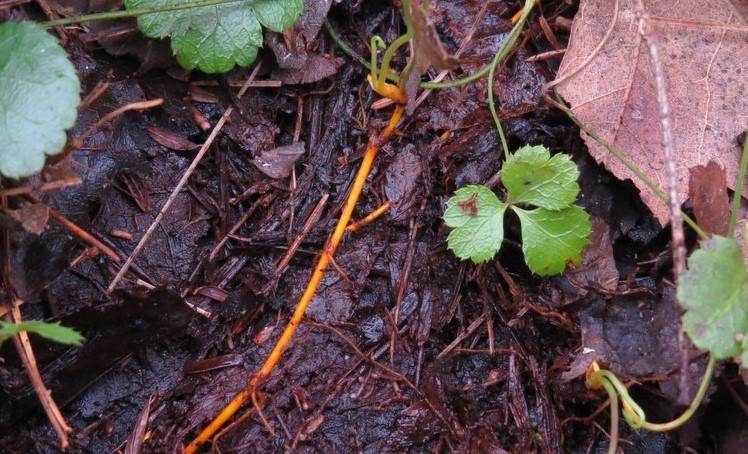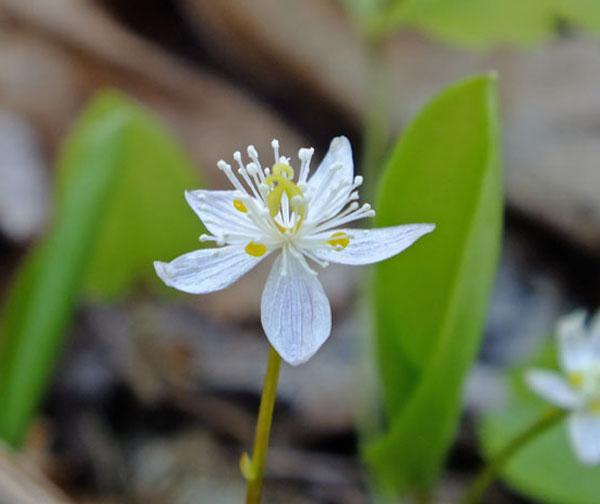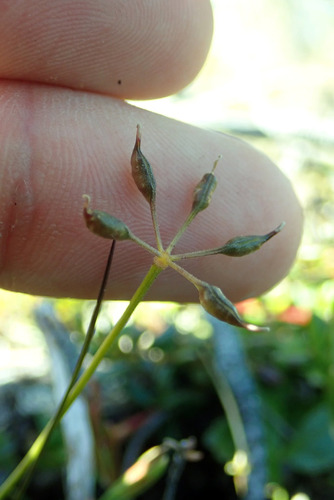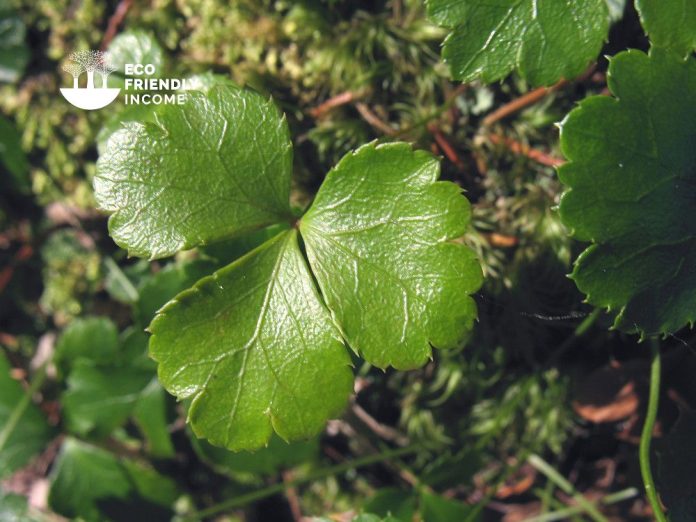A field guide on how to identify and propagate Threeleaf Goldthread (Coptis trifolia), a hardy zone 2 perennial shrub that is native to North America.
Goldthread is a small clover-like understory plant commonly found in the boreal forest.
It has useful medicinal properties and has a history of use by the Algonquin Tribe of North America.
They would use the yellow rhizome to eliminate diarrhea, treat respiratory problems, soothe kidney aches, back, and spine pain, and treat burns, and stomach ulcers.
Some say chewing the rhizome will keep your teeth clean and white, and space out dentist visits. (If you can handle the strong bitter taste of the root!)
Personally, I think the plant has a nice appeal for terrariums or humid, shaded areas of your garden.
In this guide, you can expect to learn how to identify them, and how to propagate them.
Let’s get to it:
Table of Content
How to Identify Threeleaf Goldthread (Coptis trifolia)
Leaves & Root

The leaves of threeleaf goldthread are small, dark green, inversely egg-shaped, and have three leaflets arranged in a palmate structure. The leaflets have serrated margins and a slightly glossy surface. The leaves grow in clusters at the ends of the stems.
Goldthread gets its name from the color of its rhizome, or root, which is bright yellow.
When you think you spotted some goldthread, all you need to do to confirm is to dig a little around the plant to expose the roots. If what you see is bright yellow, then what you have in hand is threeleaf goldthread!
Flowers

Threeleaf goldthread flowers have 4-7 white petaloid sepals. Looking closely, you will see another 4-7 clavate and numerous stamen.
The sepals are of a clear white color while the clavate is yellow.
Note: It only produces one flower per leaflet.
Flowering Season
You can see Threeleaf Goldthread blooming from spring to early summer.
Habitat
Coptis trifolia grows in moist to dry forests, woodlands, marshlands, and along streambanks in Canada and some parts of the Northeastern USA.
I’ve commonly seen it grow through moss with plants such as:
Wildlife Value
Since the plant is very tiny, it does not provide much food for wildlife. The flowers have some significance for pollinators such as bees.
How to Propagate Threeleaf Goldthread (Coptis trifolia)

Hardiness Zone: 2-7

Soil Type: Loam, peat, moss.

Water: Normal to High.

Exposure: Partial Shade.
Threeleaf goldthread is a rhizomatous plant, which means there’s a great chance you can propagate it by division.
Alternatively, you can gather the seeds and germinate them yourself.
Let’s look at the details:
How to Propagate Threeleaf Goldthread (Coptis Trifolia) by Division
Threeleaf goldthread likes to spread by rhizome, which means a mother plant will send underground horizontal roots from which clones will sprout.
This makes them relatively easy to divide for propagation.
Note: The best time to divide is when the plant goes into dormancy during fall. It’s not a good time to divide during spring because that’s about the time they make their flowers.

Here’s how to do it:
- Find a wild patch of threeleaf goldthread and identify the largest plants.
- Dig a little and look closely to see the bright yellow rhizomes going away from the mother plant.
- It should lead you to a clone further down, now all you need to do carefully is dig it out.
- Snip a part of the horizontal rhizome with it and separate the clone from its mother, make sure to keep it moist until you transplant.
- When you transplant, you want to remove any dead or diseased foliage.
- Pot them individually (in peat moss) and water them thoroughly.
- Keep away from direct sunlight until it establishes itself well.
How to Propagate Threeleaf Goldthread (Coptis Trifolia) by Seed
Of course, you can propagate threeleaf goldthread by seed, but like other northern plants, they will need to go through stratification.
Goldthread seeds appear on the plants not long after they bloom in May.

You can harvest the capsules which contain the seeds and let them dry in a paper envelope.
Stratification
If you want high success germinating your seeds, you’ll need to put them through stratification. Here’s how to do it:
- Put the seeds in a plastic bag and place them into your freezer for 90 days.
- Then let them thaw, and place them into room temp water for 12 hours.
- Take them out of the water and put them into your refrigerator for 60 days (do not refreeze).
Germination
- Next plant in a 3″ deep planter under very light soil (peat moss) cover (1/2 to 1″ deep). Keep even moisture throughout the growth cycle (don’t allow it to completely dry).
- Finally, when they’re ready to transplant, 6-inch deep pots filled with 50/50 peat moss/sand is perfect.
FAQ
Q: What is Goldthread used for?
A: The medicinal properties of Threeleaf goldthread include: antiscorbutic, antiseptic, pain killer, stomachic, tonic. It contains an alkaloid called berberine, which has been used against diabetes, high cholesterol, and high blood pressure.
Q: Is Threeleaf Goldthread edible?
A: Yes, but not particularly tasty, the roots taste very bitter.

